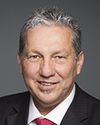I'd be delighted to.
That task force really turned the page, as it were. It led to a lot of repatriation by museums of human remains and sacred materials. It led to a lot of co-management agreements. It led to a training program being set up for aboriginal people in museum studies, and it led to the creation of a number of aboriginally owned, built, and operated museums in Canada. There are quite a few now as a result.
However, that was 30 years ago, and we've been wanting to dust off that report to look at what worked, at what didn't work, the causes of delays, and what's missing. We in fact have a meeting at 11 o'clock this morning with the Assembly of First Nations to discuss our proposal. Our proposal isn't just over the 1992 report; it's also over the Truth and Reconciliation Commission's recommendations.
I recently met with Murray Sinclair, the senator and former chair. He's going to be the keynote speaker, we hope, at our convention. We are also looking at the UN declaration, which was just ratified by Canada a few weeks ago. All of this is in the mix. It is a two-year or so study that will be undertaken, and it's a major commitment that we really stand by. We wanted to share that with you and would be delighted to come back and report to you.
The other point I would like to make while we're talking is that one of the reasons we're so excited by your studying the question of museums is that this has never been done by this committee or any other Parliamentary committee before. There have been studies done on Canadian culture writ large, but that's everything from broadcasting to social media to stage plays and acting—everything. Your study is really from the bottom up. We believe a bottom-up study is going to be far more meaningful. It will be far more focused and practical.
We're not here with ideas and recommendations that are irresponsible. We want to present you with very responsible recommendations. We don't believe that government should pay 100% of the bills for museums. We believe museums should have their resources very balanced. We have before you a recommendation of how we could increase philanthropy and donations to museums in Canada.
These are the kinds of things—





